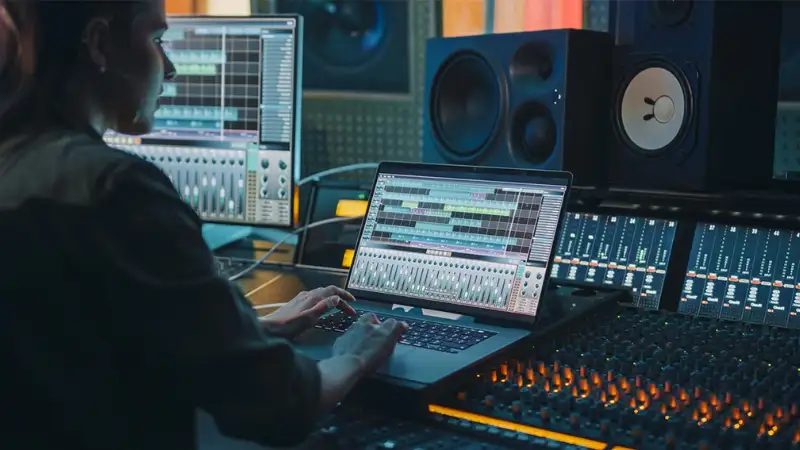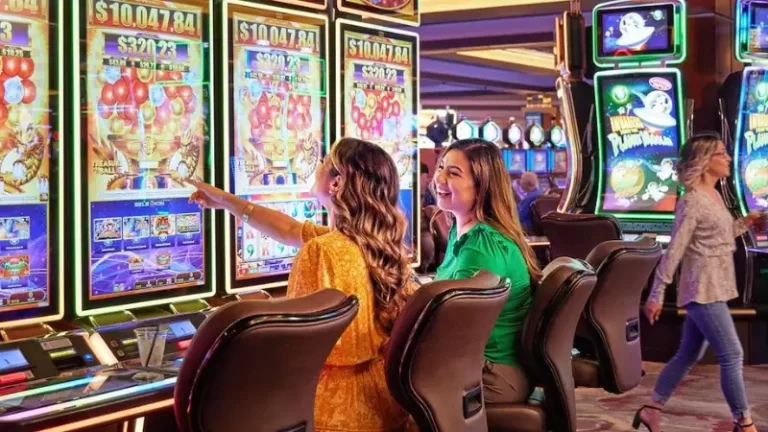
Slot Sound Design
Audio may be overlooked in the visual world of slot games, but Slot Sound Design plays a critical role in shaping player experience, emotion, and motivation. At Slot Pillar, we value how well-crafted sound enhances immersion, reinforces wins, and strengthens engagement without players even realizing it.
What Is Slot Sound Design?
Slot Sound Design refers to the deliberate use of audio elements like ambient tracks, reel spins, jackpot jingles, and bonus notifications. These sounds are not mere add-ons—they act as emotional cues, guiding players through gameplay. Skilled Slot Sound Design uses timing, pitch, and rhythm to unsettle or reward the player, mirror the game theme, and even subtly influence player behavior.
How Sound Enhances the Experience in Slot Games
High-quality Slot Sound Design can improve user experience, retention rates, and even revenue. Here are reasons why audio is powerful in slot design:
Emotional Feedback
When players hit a small win, an upbeat chime coupled with a visual cue delivers positive reinforcement. This reward feedback makes the experience gratifying and encourages continued play. Sound is a critical element in portraying that sense of accomplishment.
Engagement and Immersion
A slot themed around underwater treasure benefits immensely from bubbling water motifs and rising melodies. Thoughtful Slot Sound Design transports players into new worlds, making them feel immersed rather than simply spinning reels.
Pacing and Attention
Slot games manage tempo with audio. Fast-paced spin sounds during autoplay raise excitement, while softer, more melodic segments during bonus rounds calm the mind and maintain focus.
Player Guidance
Audio helps guide focus to important moments. A subtle crescendo alerts players to upcoming free spins, while jittery tones may signal approaching jackpots. By embedding these sound cues, Slot Sound Design directs attention and increases clarity.
Core Elements of Slot Sound Design
Reel Spin and Stop Effects
The clickety spin and reel-stop sounds offer tactile sensation without touch. These sounds simulate mechanical feedback, satisfying the player’s sense of control. Carefully tuned timing of these effects is key for skillful Slot Sound Design.
Winning and Losing Feedback
Audio designers vary when wins occur. A small win calls for a pleasant chime; near misses may trigger a soft sigh or shimmering tone; big wins require louder, celebratory music. This emotional layering helps players distinguish moment-to-moment events without always watching the screen.
Bonus and Feature Themes
Bonus rounds often come with unique audio motifs. A free spin might begin with a small fanfare leading into a supportive melody. Jackpot triggers demand epic musical sequences. These layers make feature activation exciting and memorable.
Ambient Background and Loop Music
Main theme cycles create ambience without causing fatigue. Slot Sound Design must balance variety with restraint, avoiding annoying repetition while preserving mood and theme consistency.
Collectibles and Milestones
Long-term features such as progress bars and milestones benefit from audio stingers—short alerts notifying players of milestones reached. These can produce dopamine hits even when actual wins are small.

Understanding the Psychological Effects of Slot Game Sounds
Reinforcement and Conditioning
Thanks to principles of operant conditioning, slot sound design influences behavior. Consistent pairing of audio cues with reward cycles creates subconscious associations that keep players spinning despite small losses.
Emotion and Dopamine
Audio triggers stimulate emotional highs. A jackpot sound can mimic relief or joy in real life, causing dopamine release and encouraging repeat play.
Perceived Value
A robust, cinematic soundtrack enriches perceived quality. Even if mechanics are identical, two slots differ in value when one has richer audio—Slot Sound Design conveys professionalism and craftsmanship, making players more likely to choose it repeatedly.
Best Practices in Slot Sound Design
Theme Alignment
Audio must reflect the game theme. A medieval slot should feature lutes and horns in spin and win sounds; sci-fi slots benefit from laser bleeps and ethereal pads. Aligning audio style with visuals preserves immersion.
Dynamic Audio Mixing
Adaptive soundtracks that change based on game state—such as muted ambient music during intense feature reveals—show sophistication in Slot Sound Design, keeping players focused on key events.
Seamless Looping
For ambient or background audio, loops must be designed to be seamless and non-repetitive. A smooth loop avoids distraction and sustains immersion.
Frequency Balancing
Sounds should not compete. Spin effects are mid-frequency, background music sits lower, high-frequency jingles highlight wins. Skilled mixing ensures clarity and prevents audio clutter.
Accessibility Considerations
Not all players are hearing perfectionists. Designers must ensure essential audio cues are clear even at low volume. Features like captions or visual indicators help maintain accessibility.
Mobile and Cross-Platform Slot Sound Design
With the rise of mobile gaming, Slot Sound Design must adapt to smaller speakers and variable headphone usage. Soundtracks are compressed to save space, and designers often limit audio layers to prevent distortion. Cross-platform testing ensures consistent experience across devices.
Tools and Workflow for Slot Sound Design
Audio designers typically start with prototypes and placeholders, then refine sounds through iterative testing. They use middleware like FMOD or Wwise to trigger sounds programmatically. Every iteration in Slot Sound Design is tested with player feedback, logging the impact of different audio styles on engagement and transaction behavior.
Common Mistakes in Slot Sound Design
Overcomplication
Too many simultaneous audio elements cause confusion. Poor mixing or chaotic effects reduce gameplay quality.
Ignoring Volume Control
If sounds are too loud or soft by default, players may skip or ignore them. Volume needs careful balance and easy adjustability.
Repetition Fatigue
Overused sounds on loops can irritate players. Evolving background themes or randomized elements are part of good Slot Sound Design.
Off-Theme Sounds
A game must sound like itself. A pirate slot shouldn’t feature futuristic bleeps—mismatches break immersion.
Measuring the Impact of Slot Sound Design
Engagement Metrics
Monitoring session length, bounce rates, and feature triggers can show how audio encourages stickiness.
Player Feedback
Surveys, rating, or qualitative reviews help audio designers refine emotional tone and interaction styles.
A/B Testing
Testing different jingles or ambient designs helps pinpoint which sounds improve key metrics like retention and deposit rate.
Future Trends in Slot Sound Design
Adaptive Music Systems
Next-gen Slot Sound Design may include live music layers that adapt in real-time based on bet size or win likelihood, enriching player immersion.
Interactive Audio Experience
In future slots, players might influence the soundtrack using UI gestures, triggering sound choices, or adjusting soundtrack components dynamically.
3D and Binaural Audio
As headphones become more popular, Slot Sound Design may incorporate 3D spatial audio to create direction-based cues, such as bonus icons activating in the left or right audio field.
Voice Interfaces and Narration
Voice feedback during gameplay, such as narrating big bonuses or offering tips, may give slots a new dimension of personality and recognition, strengthening emotional engagement.
Tips for Players
Choose games with recognizable and pleasant audio effects. Take advantage of volume controls and play in environments where audio clarity matters. Turn sound on at times when ambiance improves immersion or off if it’s a distraction. Listening carefully and understanding audio cues can help you enjoy more features and stay entertained.
Conclusion
Slot Sound Design is not simply decoration—it’s a powerful tool that designers use to enhance player experience, extend gameplay sessions, and reinforce emotional bonds. Strategic use of melody, tempo, and feedback sounds helps players feel rewarded and invested.
At Slot Pillar, we understand how integral outstanding audio is to game quality, and we celebrate designers who use Slot Sound Design thoughtfully to build memorable slots. Understanding these audio mechanics will enrich the way you experience online slots and highlight how sound contributes to game success.



